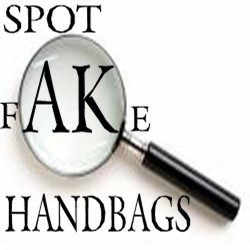How to use SpIT filter:
1) First you will need information from two bags. One bag should be the handbag you are investigating. The second bag should be an authentic handbag of the same brand, style and model. The information needed for this filter can be obtained through images online (*)if the images are of the same area. Once you have access to this information:
2) Measure between 1-4 inches on the authentic handbag's stitch line. Count the stitches within that measurement. This will be the number for the authentic handbag prompt. Write that number down, marked authentic spi.
3) Whatever distance you chose to use to measure the authentic handbag stitch line, use the same distance to measure the handbag you are investigating, in the same area. If you measured two inches of stitch line above the label on the authentic bag, then measure the same two inches of stitch line above the label on the handbag you are investigating. Then count the stitches within that distance and write the number down, marked handbag (x) spi.
4) Press the enter SpI button (above filter).
5) Enter the number of stitches marked as authentic spi, and click enter.
6) The prompt should now be asking for the handbag in question, [handbag (x)]. This is the bag you are investigating. Go ahead and enter the number of stitches you marked handbag (x) spi. 7) The filter should SpIT out the reading, telling you if the bag passes or fails (green or red). With some further notes in the yellow box below.
8) If you are working through the UhBAD filter, then go ahead and follow the result box's respective arrow and click either [Ps] or [Re].
9) If you are using the SpIT filter independent of the UhBAD filter, then no further action is needed.
Note: Remember that failing or passing this test should be considered a good indicator that the handbag is real or phony. It is not 100% conclusive proof. Further scrutiny is always recommended.
Back to top (SpIT filter)
How to Use SpIT filter on the same bag:
1) You can also use this filter to test the stitching within the same handbag. Simply pick out an area within the handbag that has an obvious adjacent area. Example: The label's leather backing, (having stitching above the label and stitching below the label). Or the stitch lines on adjacent handles etc.
2) Then simply measure (between 1-4 inches) of a distinct stitch line within the area (example: label's top stitch line), and count the stitches. Write this number down and mark the number as (a).
3) Then, using the same distance you used to measure area (a), measure the stitch line in the adjacent area (example: label's bottom stitch line), and count the stitches. Write this number down and mark the number as (b).
4) Press the enter SpI button (above filter).
5) Enter the number marked (a) in the first prompt (authentic spi) and click enter.
6) Enter the number marked (b) in the second prompt (handbag x spi) and click enter.
7) Filter should SpIT out reading, telling you if the stitching within the handbag is a pass or fail.
Note: The stitching within the same handbag, within the same area of comparison should conform to the same quality standards. If a handbag is inconsistent with itself, then that should always give rise to caution.
F/N: Remember that failing or passing this test should be considered a good indicator that the handbag is real or phony. It is not 100% conclusive proof. Further scrutiny is always recommended.
Back to top (SpIT filter)
Example of SpIT filter applied to two authentic items of the same brand: Bebe test




